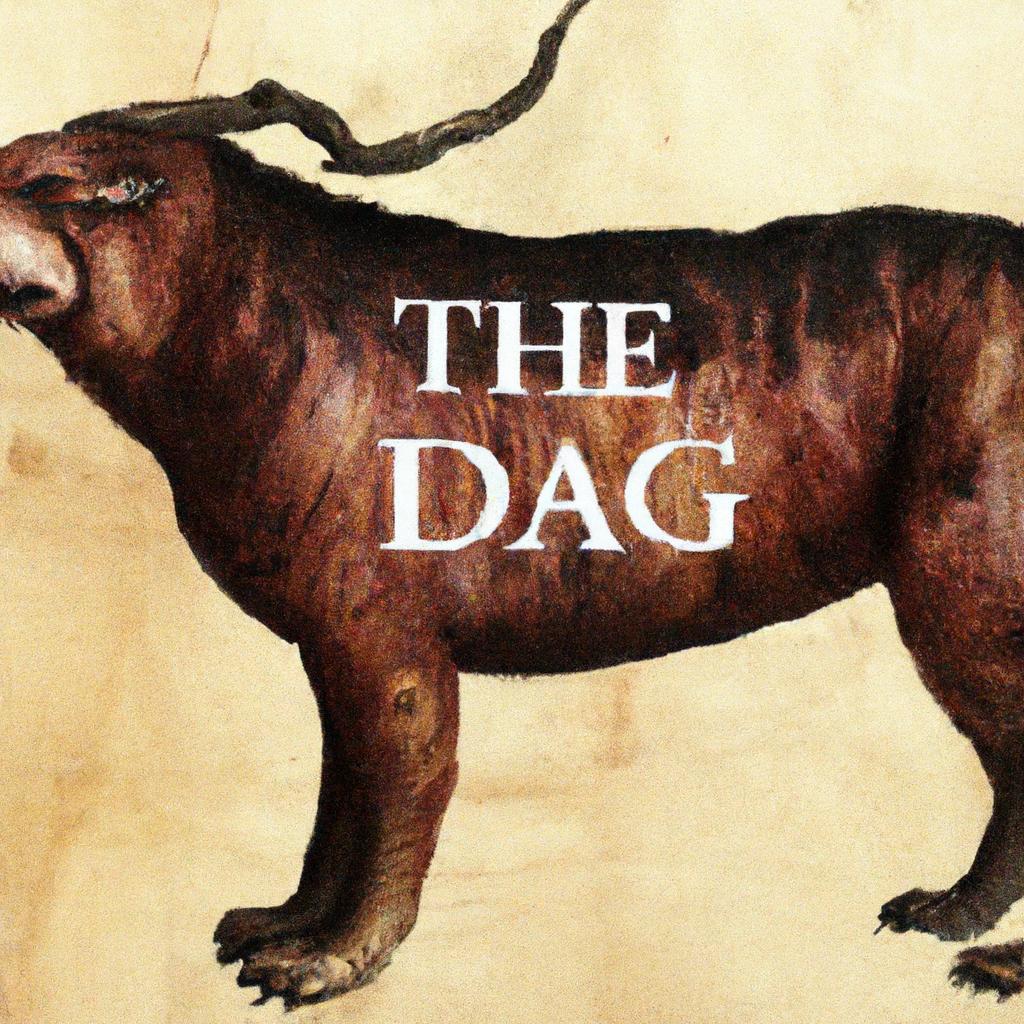In the vast plains of prehistoric Earth roamed the mighty Smilodon, often called the saber-toothed cat.With its elongated canines glinting in the sun, it was a master of ambush, stalking herds of giant mammals. One fateful day, a massive woolly mammoth wandered too close. With a powerful leap,the Smilodon struck,its teeth sinking deep into the thick hide. Though it vanished from the Earth long ago, the legend of its strength and prowess endures, reminding us of nature’s fierce beauty and the mysteries of evolution.
Table of Contents
- Exploring the Majestic Saber-Toothed Tiger and Its Dominance in Prehistoric Ecosystems
- Unraveling the Anatomy of Strength: Physical Features of Extinct Big Cats
- Comparative Analysis: How Extinct Cats Stack Up Against Modern Felines
- Conservation Lessons from the Past: What Extinct Cats Teach Us About Survival Today
- Q&A
Exploring the Majestic Saber-Toothed Tiger and Its Dominance in Prehistoric Ecosystems
The saber-toothed tiger, scientifically known as Smilodon, roamed the Earth during the Pleistocene epoch, captivating the imagination of paleontologists and enthusiasts alike. With its iconic elongated canine teeth, this formidable predator was not just a fearsome sight but also a master of its environment. The saber-toothed tiger’s robust build, powerful limbs, and specialized hunting techniques allowed it to dominate the prehistoric ecosystems of North America and beyond.
One of the most striking features of the saber-toothed tiger was its impressive size. adult males could weigh up to 600 pounds, making them one of the largest felids to ever exist. Their muscular bodies were designed for short bursts of speed, enabling them to ambush prey effectively. Unlike modern big cats that rely on endurance,the saber-toothed tiger’s hunting strategy involved stealth and surprise,allowing it to take down large herbivores such as bison and mammoths with lethal efficiency.
Along with their physical prowess, saber-toothed tigers exhibited captivating social behaviors. Evidence suggests that they may have hunted in packs, similar to modern lions, which would have increased their chances of successfully bringing down larger prey. This social structure not only enhanced their hunting capabilities but also allowed them to defend their territory against rival predators, further solidifying their position at the top of the food chain.
The extinction of the saber-toothed tiger, along with many other megafauna, is attributed to a combination of climate change and human activity. As the Ice Age came to an end, their habitats shrank, and prey became scarce. Despite their eventual demise, the legacy of the saber-toothed tiger endures, reminding us of the amazing diversity and complexity of prehistoric life. Their dominance in ancient ecosystems serves as a testament to the intricate balance of nature and the ever-evolving story of survival on our planet.
Unraveling the anatomy of Strength: Physical Features of Extinct Big Cats
When exploring the physical features of extinct big cats,one cannot overlook the remarkable adaptations that contributed to their strength and prowess as apex predators. Thes magnificent creatures, such as the saber-toothed cat, boasted elongated canines that could reach lengths of up to 8 inches. These formidable teeth were not just for show; they were essential tools for delivering lethal bites to prey, allowing these cats to take down animals much larger than themselves.
Along with their impressive dentition, the skeletal structure of these big cats played a crucial role in their strength. The robust build of the saber-toothed cat, as a notable example, featured a powerful jaw and a muscular neck, designed to withstand the forces exerted during a hunt. Their forelimbs were also heavily muscled, enabling them to deliver powerful swipes and hold onto struggling prey with remarkable tenacity. This combination of features made them not only fearsome hunters but also resilient survivors in their harsh environments.
Another fascinating aspect of these extinct felids is their size. Many of them were significantly larger than modern big cats, with some species, like the American lion, rivaling the size of today’s largest predators. This increase in size often correlates with greater strength, allowing these cats to dominate their ecosystems. Their large paws and retractable claws provided both stability and grip, essential for navigating diverse terrains while pursuing prey or defending their territory.
the adaptations of these extinct big cats extended beyond mere physical attributes. Their hunting strategies, social structures, and environmental adaptations all contributed to their strength as a species. For example,some species may have hunted in packs,leveraging their collective strength to take down larger prey. this social behavior, combined with their physical prowess, paints a vivid picture of how these magnificent creatures ruled their domains, leaving a lasting legacy in the annals of natural history.
Comparative Analysis: How Extinct Cats Stack Up Against Modern Felines
When examining the formidable lineage of felines, it becomes evident that extinct cats, such as the saber-toothed tiger and the American lion, were not only larger but also possessed unique adaptations that set them apart from their modern counterparts. These prehistoric predators roamed the Earth with a combination of strength and agility that allowed them to dominate their environments.In contrast,today’s big cats,like lions and tigers,have evolved to thrive in specific ecological niches,showcasing a diffrent kind of prowess.
One of the most striking differences lies in the physical attributes of these extinct species. For instance, the **saber-toothed cat** (smilodon) boasted elongated canine teeth that could reach up to 8 inches in length, designed for delivering lethal bites to large prey. In comparison, modern felines have shorter, more versatile teeth suited for a varied diet. This specialization highlights how extinct cats were adapted to hunt large herbivores, while contemporary species have diversified their hunting strategies to include smaller animals and scavenging.
Behaviorally, extinct cats exhibited hunting techniques that were likely more reliant on ambush and strength, given their size and the prey they targeted. The **American lion** (Panthera leo atrox), for example, was significantly larger than today’s African lions, suggesting that it may have employed a different approach to hunting, possibly working in packs to take down massive prey like bison and horses.Modern big cats, while still formidable hunters, often rely on stealth and speed, showcasing a shift in hunting strategies that reflects changes in prey availability and environmental conditions.
Furthermore, the extinction of these powerful cats can be attributed to a combination of climate change and human activity, which drastically altered their habitats and food sources. As ecosystems evolved, the specialized traits of these extinct felines became less beneficial, leading to their decline. In contrast,modern cats have shown remarkable adaptability,allowing them to survive in a variety of environments,from the savannas of Africa to the forests of Asia. This resilience underscores the dynamic nature of evolution, where survival often hinges on the ability to adapt to changing circumstances.
Conservation Lessons from the Past: What Extinct Cats Teach Us About Survival Today
Throughout history, the feline family has produced some of the most formidable predators to roam the Earth.Among these, the extinct species of cats offer a fascinating glimpse into the evolutionary adaptations that allowed them to thrive in their environments. By studying these magnificent creatures, we can glean valuable insights into the dynamics of survival, competition, and ecological balance that remain relevant today.
One of the most powerful extinct cats is the Smilodon, commonly known as the saber-toothed tiger. With its iconic elongated canines and robust build, this apex predator was well-equipped for hunting large prey during the Pleistocene epoch. The Smilodon’s hunting strategy likely involved ambushing its prey, using its strength and agility to deliver a fatal bite. This highlights the importance of specialized adaptations in survival, reminding us that modern conservation efforts must consider the unique traits of endangered species and their ecological roles.
Another remarkable example is the Panthera leo spelaea, or the European cave lion. This majestic creature roamed across europe and parts of Asia, showcasing a remarkable ability to adapt to diverse habitats. Its social structure, likely similar to that of modern lions, suggests that cooperation and group dynamics played a crucial role in its hunting success. Understanding these social behaviors can inform current conservation strategies, emphasizing the need for preserving not just individual species but also their social structures and habitats.
Lastly, the Thylacoleo, or the marsupial lion, presents a unique case of convergent evolution. Despite being a marsupial, it developed traits akin to those of placental cats, such as powerful jaws and sharp claws. This adaptability underscores the significance of ecological niches and the potential for species to evolve in response to environmental pressures.As we face the ongoing challenges of habitat loss and climate change, the lessons from these extinct cats remind us of the resilience of nature and the importance of protecting the delicate balance of our ecosystems.
Q&A
-
What is the strongest extinct cat?
The strongest extinct cat is often considered to be the Smilodon, commonly known as the saber-toothed tiger. This prehistoric feline was known for its impressive size and powerful build, with long, curved canine teeth that could deliver devastating bites.
-
How did the Smilodon hunt its prey?
smilodon likely employed a strategy of ambush hunting, using its strength and sharp teeth to take down large herbivores such as bison and mammoths. Its robust forelimbs allowed it to grapple with prey effectively.
-
When did the strongest extinct cats live?
Smilodon roamed the earth during the Pleistocene Epoch, approximately 2.5 million to 10,000 years ago. This period was marked by the presence of large mammals and significant climatic changes.
-
What led to the extinction of the Smilodon?
The extinction of Smilodon is believed to be due to a combination of factors, including climate change, habitat loss, and the decline of large prey species, possibly exacerbated by human hunting activities.
In the grand tapestry of nature’s history, the strongest extinct cat stands as a testament to evolution’s wonders. While these magnificent creatures have vanished, their legacy endures, reminding us of the power and diversity that once roamed our planet.

大家好,我是彼得潘,專業的手法身體治療師。我喜歡探索和研究各種主題,並透過與人工智慧的合作分享專業、實用、有趣的文章。我們定期進行人工審核,以確保內容的準確性。如果您發現文章中有任何不準確的地方,請隨時與我們聯繫,我們會及時糾正。您可以透過 [email protected] 與我們聯繫。



